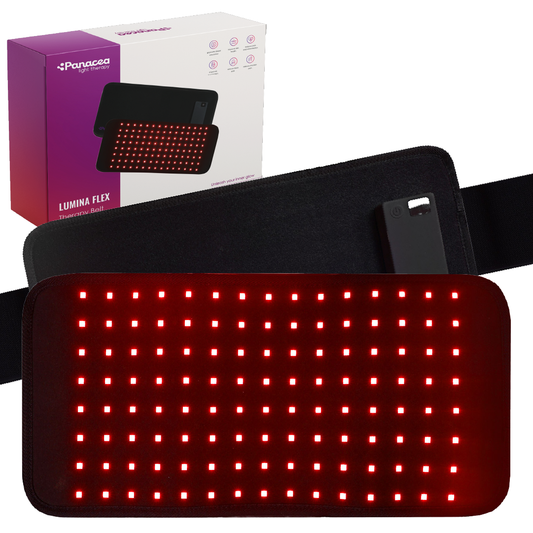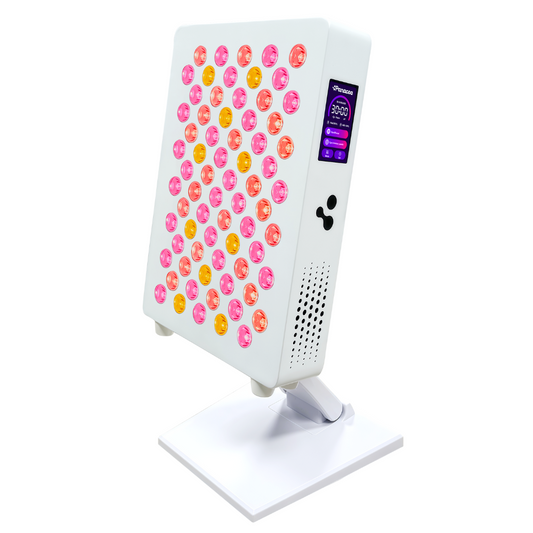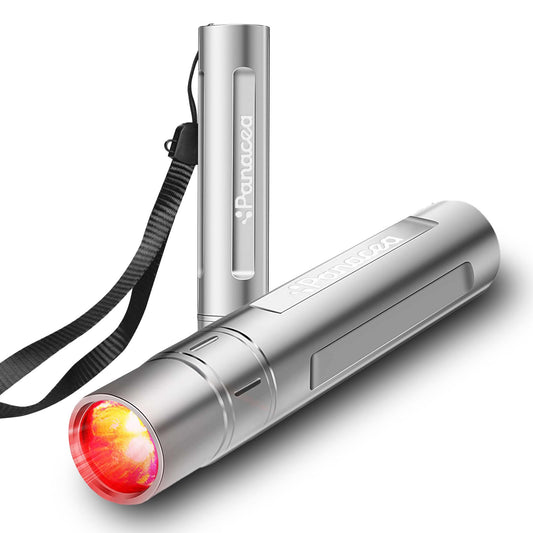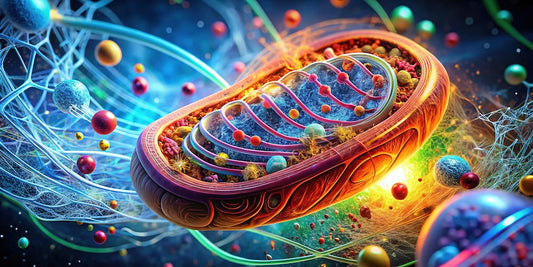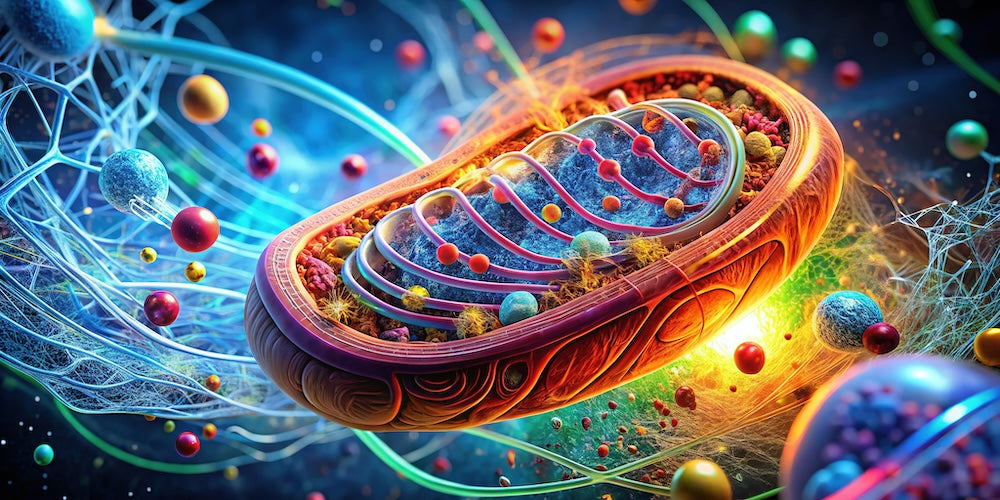
Red Light Therapy and ATP Production: How Do 630-1060 nm Wavelengths Work on Mitochondria?
Share
Red light therapy (or photobiomodulation ) is an emerging medical intervention that uses specific wavelengths of light—usually in the red and near-infrared spectrum—to stimulate cellular processes. A growing number of studies show that certain wavelengths, particularly 630 nm, 660 nm, 810 nm, 850 nm, 940 nm, and 1060 nm, have a profound effect on energy production in mitochondria, with the key component being ATP.
What is ATP and why are mitochondria important?
ATP ( adenosine triphosphate ) is the body's energy currency. Every cell, especially organs with high energy demands such as the brain, heart, and muscles, produces ATP in its mitochondria through a process called oxidative phosphorylation .
When mitochondria underperform—for example, due to aging, inflammation, brain damage, or chronic fatigue—ATP production decreases. This is where red light therapy comes into play.
How does red light therapy stimulate ATP production?
The core of the effect lies in the mitochondrial enzyme cytochrome c oxidase (complex IV). This chromophore absorbs light in the red/near infrared (NIR) spectrum. Illumination with specific wavelengths results in:
- Increased permeability of mitochondrial membranes
- Increased oxygen consumption
- More synthesis of ATP
- Increased production of growth factors and reduced oxidative stress
The Role of Wavelengths: 630, 660, 810, 850, 940 & 1060 nm
| Wavelength (nm) | Effect | Penetration | Backed by research |
|---|---|---|---|
| 630 nm | Stimulates cell division, collagen synthesis | Superficial (skin) | Kohlhaas et al., 2024 |
| 660 nm | Activates cytochrome c oxidase | Up to a few mm | Glass, 2023; Lin et al., 2024 |
| 810 nm | Deep penetration, brain tissue | 2–3 cm | Tuchin et al., 2024 |
| 850 nm | Maximizes ATP synthesis | 3–5 cm | Semyachkina-Glushkovskaya et al., 2023 |
| 940 nm | Improves circulation and NO production | 4–5 cm | Hernández-Bule et al., 2024 |
| 1060 nm | Heat effect on adipose tissue and cell membranes | Deeper than 5 cm | Lin et al., 2024 |
Relevant Scientific Studies
-
Tuchin et al. (2024)
“Transcranial photobiomodulation for brain diseases”
Showed increased ATP production and neuroplasticity when using 660, 810, 850, and 1064 nm in brain modulation.
View PDF -
Glass (2023)
“Photobiomodulation: a systematic review”
Confirms stimulation of ATP at 660 and 850 nm in human skin cells without tumor stimulation.
View article -
Semyachkina-Glushkovskaya et al. (2023)
“Phototherapy of Alzheimer's disease”
Documented increased ATP synthesis in neurons at 660 and 810 nm.
View study -
Lin et al. (2024)
“Photobiomodulation therapy on brain”
810 nm and 1060 nm were found to be effective in brain functions and ATP stimulation via vasodilation.
Read more -
Hernández-Bule et al. (2024)
“Comprehensive Review on Photobiomodulation”
Compared effects of 810, 1064, and other wavelengths on mitochondrial targets.
Link to PDF -
Wetzel et al. (2023)
Showed increased mitochondrial function in patient cells at 810 and 850 nm.
View PDF -
Salehpour et al. (2023)
Book chapter on photobiomodulation in neuropsychiatry confirms ATP stimulation at 630–1060 nm.
View book -
Nairuz & Lee (2024)
Investigation of ATP increase with transcranial illumination (810 nm).
View study -
Kaffash et al. (2025)
Overview study on ATP generation and mitochondrial response to light in implant development.
Read here -
Zheng et al. (2025)
Relationship between photosynthetic light and ATP response in plant cells – relevant for cross-species insights.
View PDF
Practical Applications of Red Light Therapy
- Brain Health : Increased ATP in brain cells (810/1060 nm).
- Skin rejuvenation : Stimulation of collagen production (630/660 nm).
- Muscle recovery : Improved energy availability (850/940 nm).
- Anti-inflammatory : Reduced oxidative stress via ATP upregulation. (850nm)
- Sleep and cognition : Via brain lymphatic activation at 810/1060 nm.
Conclusion
Red light therapy with specific wavelengths (630 to 1060 nm) has well-substantiated scientific effects on mitochondrial function, particularly on ATP production. Optimal effectiveness depends on wavelength, intensity, exposure time, and target depth. This form of therapy is increasingly recognized as a safe and effective biomedical intervention.
✨ When choosing red light therapy, always consider products with proven intensity, correct wavelength tuning and clinical substantiation.
📚 Source References & Further Reading:

